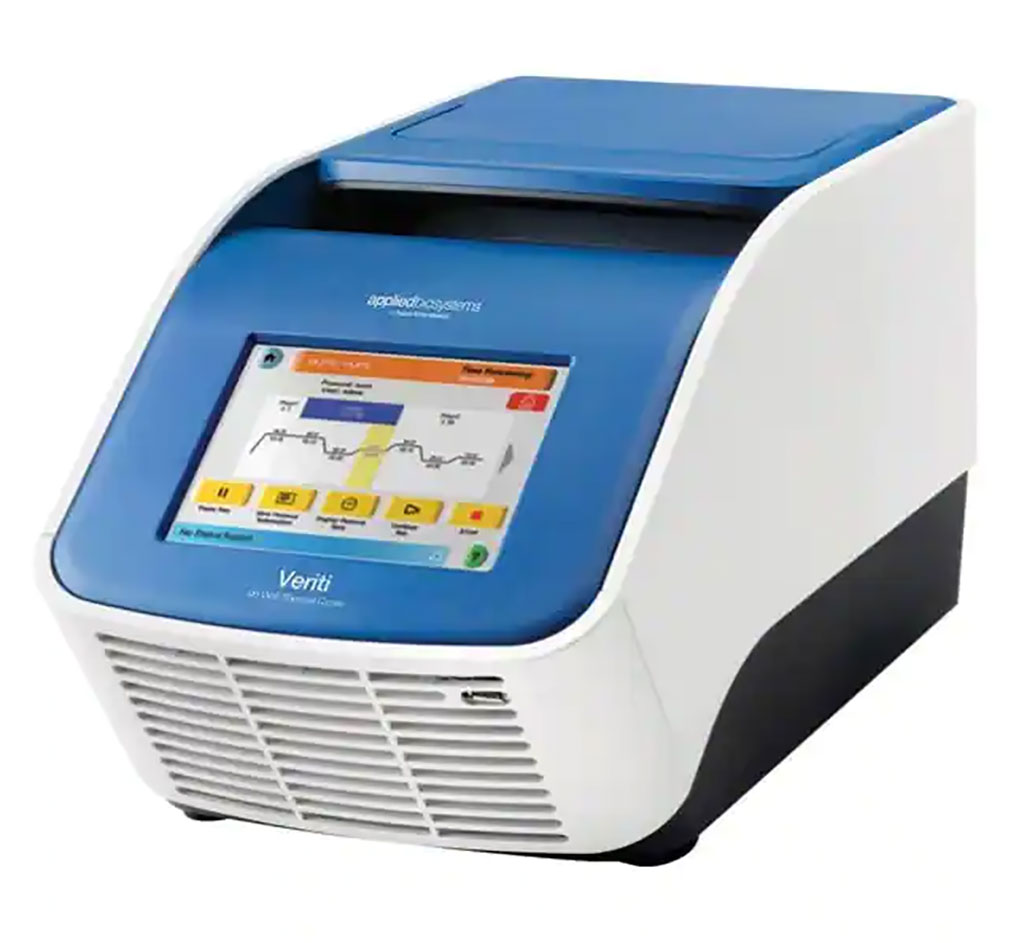Accurate Genetic Assay Identifies Human Neutrophil Antigen 2 Deficiency
|
By LabMedica International staff writers Posted on 08 Nov 2022 |

Human Neutrophil Antigen 2 (HNA-2) is one of the most important neutrophil antigens implicated in a number of human disorders. HNA-2 deficiency or HNA-2 null is a common phenotype observed in 3%–5% of US citizens.
HNA-2 null individuals are at risk to produce isoantibodies (or alloantibodies) that play important roles in transfusion-related acute lung injury, immune neutropenia, and bone marrow graft failure. CD177 coding SNP 787A > T (c.787A > T) is the most important genetic determinant for HNA-2 deficiency that involves human myeloproliferative disorders.
Biomedical Scientists at the University of Minnesota (St. Paul, MN, USA) recruited healthy blood donors at the Memorial Blood Center in St. Paul, MN, USA). The age of healthy control donors ranged from 19 to 84 years old. Human genomic DNA was isolated from EDTA anti-coagulated peripheral blood using the Wizard Genomic DNA Purification kit (Promega, Madison, WI, USA).
The expression of HNA-2 and the percentage of HNA-2+ neutrophils in healthy blood donors were determined. Fresh whole blood samples were stained with FITC-conjugated mouse anti-human CD177 (HNA-2) mAb MEM-166 or FITC-conjugated mIgG1 isotype control and analyzed on a FACS Canto flow cytometer (BD Biosciences, San Jose, CA, USA). A novel polymerase chain reaction (PCR) strategy was used to determine genotypes of the CD177 SNP c.787A > T.
In the simplified PCR assay, all allele specific primers and internal control primers were included in the same reaction, which ensures reliability of the assay. In addition, a novel high-throughput nested TaqMan assay was developed to determine genotypes of c.787A > T for large population genetic analysis of HNA-2 deficiency. The Applied Biosystems Veriti 96-well Thermal Cycler was used for the PCR reactions (Thermo Fisher Scientific, Waltham, MA, USA).
The scientists reported that CD177 SNP c787A > T genotypes of 396 subjects were 100% concordant among the single PCR reaction method, the nested TaqMan assay, and Sanger Sequencing analysis. Out of 396 subjects, all 18 donors with the CD177 STP homozygous genotype were HNA-2 null.
The authors concluded that the novel PCR-based genotyping assay is accurate to identify HNA-2 deficient individuals and is suitable for clinical laboratories. In addition, the innovative high-throughput nested TaqMan assay will be useful for large-scale population screens and genetic studies of HNA-2 deficiency. The study was on October 29, 2022 in the journal Transfusion Medicine.
Related Links:
University of Minnesota
Memorial Blood Center
Promega
BD Biosciences
Thermo Fisher Scientific
Latest Molecular Diagnostics News
- Ultra-Sensitive Blood Biomarkers Enable Population-Scale Insights into Alzheimer’s Pathology
- Blood Test Could Predict Death Risk in World’s Most Common Inherited Heart Disease
- Rapid POC Hepatitis C Test Provides Results Within One Hour
- New Biomarkers Predict Disease Severity in Children with RSV Bronchiolitis
- CTC Measurement Blood Test Guides Treatment Decisions in Metastatic Breast Cancer Subtype
- Multiplex Antibody Assay Could Transform Hepatitis B Immunity Testing
- Genetic Testing Improves Comprehensive Risk-Based Screening for Breast Cancer
- Urine Test Could Reveal Real Age and Life Span
- Genomic Test Identifies African Americans at Risk for Early Prostate Cancer Recurrence
- Blood Test Could Identify Biomarker Signature of Cerebral Malaria
- World’s First Biomarker Blood Test to Assess MS Progression
- Neuron-Derived Extracellular Vesicles Could Improve Alzheimer’s Diagnosis
- Sample Prep Instrument to Empower Decentralized PCR Testing for Tuberculosis
- Endometriosis Blood Test Could Replace Invasive Laparoscopic Diagnosis
- World's First NGS-Based Diagnostic Platform Fully Automates Sample-To-Result Process Within Single Device
- Rapid Diagnostic Breakthrough Simultaneously Detects Resistance and Virulence in Klebsiella Pneumoniae
Channels
Clinical Chemistry
view channel
Blood Test Could Predict and Identify Early Relapses in Myeloma Patients
Multiple myeloma is an incurable cancer of the bone marrow, and while many patients now live for more than a decade after diagnosis, a significant proportion relapse much earlier with poor outcomes.... Read more
Compact Raman Imaging System Detects Subtle Tumor Signals
Accurate cancer diagnosis often depends on labor-intensive tissue staining and expert pathological review, which can delay results and limit access to rapid screening. These conventional methods also make... Read moreMolecular Diagnostics
view channel
Ultra-Sensitive Blood Biomarkers Enable Population-Scale Insights into Alzheimer’s Pathology
Accurately estimating how many people carry Alzheimer’s disease pathology has long been a challenge, as traditional methods rely on small, clinic-based samples rather than the general population.... Read more
Blood Test Could Predict Death Risk in World’s Most Common Inherited Heart Disease
Hypertrophic cardiomyopathy (HCM) is the world’s most common inherited heart condition and affects millions of people globally. While some patients live with few or no symptoms, others develop heart failure,... Read moreImmunology
view channel
Ultrasensitive Liquid Biopsy Demonstrates Efficacy in Predicting Immunotherapy Response
Immunotherapy has transformed cancer treatment, but only a small proportion of patients experience lasting benefit, with response rates often remaining between 10% and 20%. Clinicians currently lack reliable... Read more
Blood Test Could Identify Colon Cancer Patients to Benefit from NSAIDs
Colon cancer remains a major cause of cancer-related illness, with many patients facing relapse even after surgery and chemotherapy. Up to 40% of people with stage III disease experience recurrence, highlighting... Read moreMicrobiology
view channel
New UTI Diagnosis Method Delivers Antibiotic Resistance Results 24 Hours Earlier
Urinary tract infections affect around 152 million people every year, making them one of the most common bacterial infections worldwide. In routine medical practice, diagnosis often relies on rapid urine... Read more
Breakthroughs in Microbial Analysis to Enhance Disease Prediction
Microorganisms shape human health, ecosystems, and the planet’s climate, yet identifying them and understanding how they are related remains a major scientific challenge. Even with modern DNA sequencing,... Read morePathology
view channel
Genetics and AI Improve Diagnosis of Aortic Stenosis
Aortic stenosis is a progressive narrowing of the aortic valve that restricts blood flow from the heart and can be fatal if left untreated. There are currently no medical therapies that can prevent or... Read more
AI Tool Simultaneously Identifies Genetic Mutations and Disease Type
Interpreting genetic test results remains a major challenge in modern medicine, particularly for rare and complex diseases. While existing tools can indicate whether a genetic mutation is harmful, they... Read more
Rapid Low-Cost Tests Can Prevent Child Deaths from Contaminated Medicinal Syrups
Medicinal syrups contaminated with toxic chemicals have caused the deaths of hundreds of children worldwide, exposing a critical gap in how these products are tested before reaching patients.... Read more
Tumor Signals in Saliva and Blood Enable Non-Invasive Monitoring of Head and Neck Cancer
Head and neck cancers are among the most aggressive malignancies worldwide, with nearly 900,000 new cases diagnosed each year. Monitoring these cancers for recurrence or relapse typically relies on tissue... Read moreTechnology
view channel
Pioneering Blood Test Detects Lung Cancer Using Infrared Imaging
Detecting cancer early and tracking how it responds to treatment remains a major challenge, particularly when cancer cells are present in extremely low numbers in the bloodstream. Circulating tumor cells... Read more
AI Predicts Colorectal Cancer Survival Using Clinical and Molecular Features
Colorectal cancer is one of the most common and deadly cancers worldwide, and accurately predicting patient survival remains a major clinical challenge. Traditional prognostic tools often rely on either... Read moreIndustry
view channel
BD and Penn Institute Collaborate to Advance Immunotherapy through Flow Cytometry
BD (Becton, Dickinson and Company, Franklin Lakes, NJ, USA) has entered into a strategic collaboration with the Institute for Immunology and Immune Health (I3H, Philadelphia, PA, USA) at the University... Read more







 assay.jpg)













